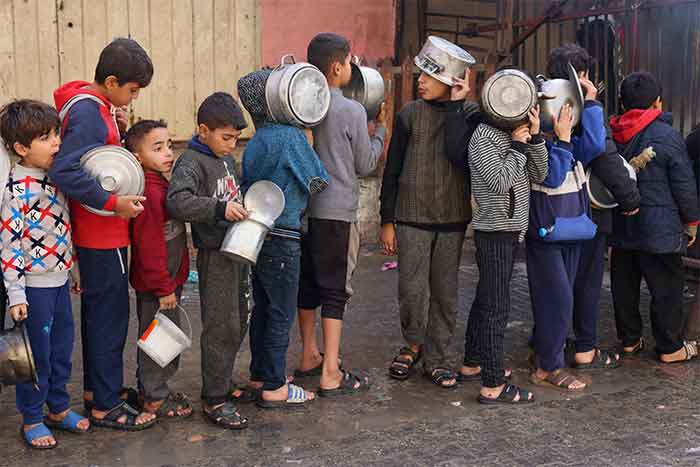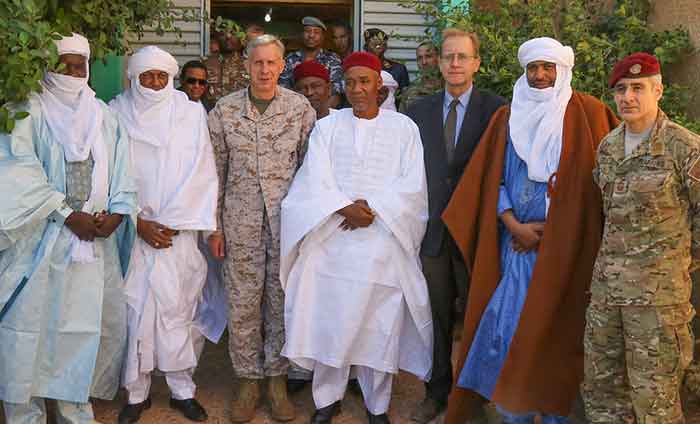
Soon after many countries of Africa became free from direct colonial rule, it was noticed that distorted patterns of trade allied to big business growth were resulting in perpetuation of hunger and staple food shortage for people. Even in most of the ‘normal’ years, per capita production and consumption of food grain in several African countries was steadily declining. Barbara Dinbam and Colin Hines pointed out in their book Agri-business in Africa that sub-Saharan Africa was the only region in the world where per capita food production had declined over 20 years, dropping in 1980-81 for the 15th time in 20 years. Per capita consumption in 1980 was 15 per cent below per capita consumption at the start of the 1970s and almost 20 per cent below that at the start of the 1960s. In 1980-81, the output of several countries in East Africa and the Sahel dropped by a third or more on the low levels reported in 1979.
African agriculture, however, was not always a deficit one. Before .the colonial era, food security and self-sufficiency in basic food needs were common. An important factor behind this was that cultivation practices were carefully linked to the soil and climatic conditions. It was an established practice to leave land fallow for an adequate period to avoid exhaustion and erosion of soil, and to grow many different varieties of food crops, so that at least some would survive the failure of rains or other vagaries of nature. Efficient storage practices also ensured that the failure of rains did not lead to extreme hunger, as grain stocks from the previous years could be used. In fact, food security was so well established, that, according to accounts from Upper Volta, it was socially unacceptable to eat grain that had spent less than three years in the granary. Not only settled villagers but even nomadic pastorals had a harmonious existence, as they travelled along carefully selected routes to areas of greenery which could support their herds, even in the most dry season. Nature may have been adverse in some ways, but peasants and pastoralists had adapted themselves well to its ways–living within its limits but making the most of them.
This harmony was given its first big shock by the slave trade, which took away millions of able-bodied strong men from their homes and fields. Following more direct colonial intervention, this deprivation of peasant families of their biggest asset of labour continued further, as able-bodied men were taken away for forced labour on mines and plantations, leaving traditional agriculture largely in the care of hard-pressed women.
This, however, was only one of the numerous ways in which the traditional system was rudely disrupted after the colonial intervention. The nomadic pastoralists found their traditional, ecologically sound routes disrupted, as new political boundaries were drawn up. Further, they were forced to increase their herd size beyond the carrying capacity of land, as new taxes were slapped on them. As cash-crop production was emphasized and grain became scarce, they had to give more and more of their annual produce in return for their requirements of grain, again forcing them to increase the herd-size. This would later prove destructive for their resource base, which in itself dwindled as pasture lands were taken up for cash crop production.
Peasants found themselves burdened with taxes which had to be paid in cash. This forced many of them to leave their peasant farms to work on plantations, while many others were forced to bring a part of their land growing staple food crops under the production of cash crops meant mostly for exports. Here also a vicious cycle set in, as peasants tried to maintain their food production by concentrating on just those food-crop varieties which gave greater yield with moisture, instead of the more secure practice of planting diverse varieties, which they had been adopting earlier. Hence their food-crops become more vulnerable to total destruction if the rains failed.
Crop-rotation and intercropping practices were carefully decided earlier with the aim of long-term protection of soil, but now these had to be given up and a single cash crop like cotton or peanuts had to be planted year after year, regardless of the havoc it caused to the soil. Thus long-term fertility of soil was lost rapidly. The entire expansion of export crops, of course, was based on maximum profits for foreign companies and lowest possible returns for African farmers and workers. Immediate economic deprivation and long-term ecological ruin were the inevitable consequences of this.
The redemption of hungry people and eroded land, however, did not come even after political independence. The African elites who came to power in most countries generally had notions of development which had been strongly influenced by Western education and concepts of development in Western countries. In this scheme of things, a significant amount of imports from Western countries (to, among other things, support the life-styles of the African elites ) were essential. This meant that the emphasis on export crops was to continue, as these were the most significant avenues of earning foreign exchange available to most of these countries. The price of most of these commodities in the international market was generally stagnating , and more and more of these had to be given up to obtain the same quantity of imports from the Western countries, but the African governments had little or no control over these terms of trade.
What is more, the trend towards more export crops was fully supported by the powerful multilateral aid agencies such as the World Bank and also the International Monetary Fund. With their frequent foreign exchange problems, African governments were very dependent on these organizations and could hardly afford to ignore their advice.
As for the foreign agri-business companies, one source of attraction for them was the availability of vast tracts land in parts of Africa, while another special attraction was the relative proximity of these countries to the rich markets of the Middle East and Europe. Soon, apart from traditional export crops, new forms of exports such as fresh vegetables, fruit, even flowers and beef were added.
At a time when food consumption had been on the decline and even in years when villagers were facing mass famine deaths, farm exports from Africa continued to boom. It sounds incredible but it is a fact that, during the drought years 1970-74 when over one hundred thousand famine deaths took place, the total value of agricultural exports from the Sahel countries (1.5 billion dollars) was three times that of all cereals imported into that region.
The impact of this kind of land-use change and ecological ruin over a long period on the lower resistance of the people in drought years can be seen in several specific contexts. The area under peanut cultivation in Niger increased very rapidly to over a million acres. This was made possible with the support of the government as well as the peanut companies. Frances Lappe and Joseph Collins write of the contribution of this trend to the massive famine deaths of the early seventies. “The expansion (of peanuts) was at the expense of fallow zones of “green belts,” critical, especially during drought years. The cutback on fallow land only compounded the soil depletion caused by the planting of peanuts year after year on the same soil. Peanut cultivation in the 1960s began to spread north, usurping lands traditionally held by pastoralists. This encroachment made the pastorals, and their animals, more vulnerable to drought.”
In Mali, in the five years preceding the drought, the area under cotton-cultivation more than doubled, bringing in its fold some of the best land. During the same period, the acreage devoted to food grain production declined significantly. Raw cotton exports during the drought years reached record levels.
In Ethiopia the pastoralists, particularly of the Afar community, were harmed greatly by the loss of about 50,000 hectares of good, and in some ways crucial, grazing land in the Awash valley, to the cultivation of cotton and sugarcane by a few big (and mostly foreign-owned) companies in the years preceding and during the famine. The importance of this land on which the pastoralists relied during the long dry season lasting from September to May, has been summed up by Glynn Flood. “If they are to be able to exploit the vast areas into which they move during the wet season, Afar pastoralists must have access to adequate dry season grazing near the river, and when a small area close to the river is made unavailable for dry season grazing, a much larger area away from the river is rendered useless.”
Faced with research on such disturbing facts, and their impact in the form of mass starvation deaths, some aid agencies and even agri- business companies started changing their stance. Instead of emphasizing only export crops, these agencies started coming forward to fund programs and projects, aimed at increasing production of food grains in Africa, even if these were mainly those grains which are consumed in the urban areas. But here also agro-business could not forget their profits. So the projects drawn up were those which will use a lot of machinery and chemical inputs produced by the agri-business giants, instead of those that are in keeping with the conditions and needs of African farmers. And it was hardly surprising that most such schemes are turned out to be wasteful and even harmful, perpetuating the dependence on big business instead of making farming communities self-reliant, increasing the high costs and indebtedness of farmers further.
The solution to Africa’s food crisis hardly lies along such imposed projects. What then is the answer? Concluding their widely discussed book Agri-business in Africa, Dinham and Hines write, “Governments have sought and relied on agri-business to generate capital for development for too long. The evidence suggests that this has only increased economic dependence on industrialized centres. The reluctance to trust the peasant-based agriculture suggests that some form of political struggle is essential before any real changes are achieved. Governments have yet to seek radical solutions structured on peasant organization in an attempt to seek longer term solutions to Africa’s agricultural stalemate.”
Bharat Dogra is Honorary Convener, Campaign to Save Earth Now. His recent books include Planet in Peril, Protecting Earth for Children and India’s Quest for Sustainable Farming and Healthy Food. This essay is adapted from his book Encyclopaedia of Development, Environment and Welfare.
















































